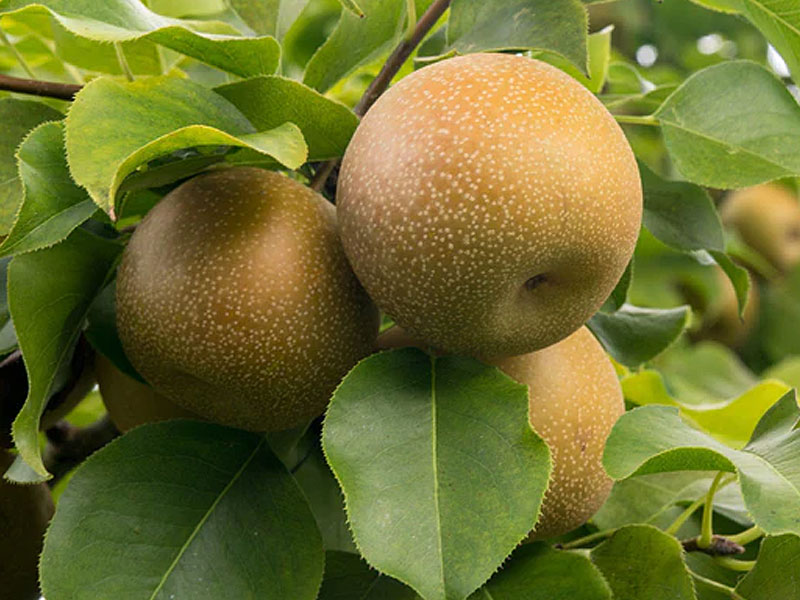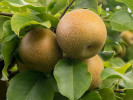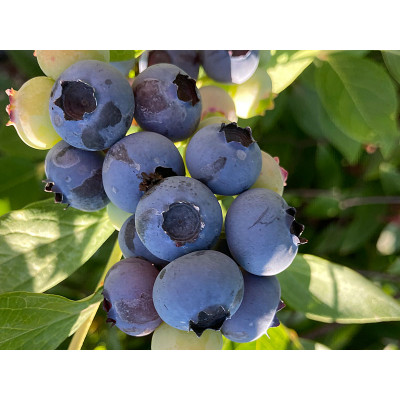Nashi - Japonská hruška (Pyrus pyrifolia) CHOJURO


Pripravujeme


- všetky rastliny, ktoré máme v ponuke a viete si ich objednať, reálne máme skladom.
- štandardná doba dodania je 1-2 pracovné dni
- balíky posielame vždy v pondelok, v utorok a v stredu
- po dohode vieme rastliny poslať aj v štvrtok alebo v piatok (tieto dni štandardne neposielame z dôvodu, ak by sa vyskytol nejaký problém, aby balíky nestáli zbytočne v depe cez víkend)
- rastliny je možné si u nás vyzdvihnúť osobne na adrese Nová 11, Krakovany - iba po telefonickom dohovore (0902519100)
Položte otázku k tomuto produktu
Nashi - Japonská hruška (Pyrus pyrifolia) CHOJURO
| Špecifikácie | |
| Výška pri predaji | 160cm |
| Kontajner | 5l |
| Podpník | Kaukazská |
| Predávame ako | 2 ročný |
| Doba dozrievania | September/Október |
| Predpokadaný dátum predaja | Máj |
Cena
28,00€
- Dostupnosť: Pripravujeme
- Model: Pyrus pyrifolia
- Stredne skorá Japonská hruška CHOJURO je jednou z mnohých odrôd japonských hrušiek, je pomerne stará, známa je už viac ako 100 rokov.
- Strom hrušky CHOJURO je stredne veľký, s rozložitým vzrastom. Dorastá do výšky približne 4 až 5 metrov. Má zaoblenú korunu, veľmi dobre rozvetvuje. Listy hrušky CHOJURO sú stredne veľké, lesklé a oválneho tvaru. Majú zelenú farbu, ktorá sa na jeseň mení na žltooranžovú až červenú.
- Kvitnutie hrušky CHOJURO nastáva na jar, zvyčajne v apríli. Jej kvety sú biele a tvoria sa v zhlukoch. Sú veľmi dekoratívne a prispievajú k estetickému vzhľadu stromu. Hruška je cudzoopelivá , vhodnými opeľovačmi sú iné ázijské hrušky.
- Hrušky CHOJURO majú oválny tvar a ich šupka je zeleno-hnedá s jemnými bodkami. Sú stredne veľké, približne 200g a majú jemnú, šťavnatú a sladkú chuť. Ich dužina je krehká, šťavnatá a krémovo-biela. Tieto hrušky sú obľúbené nielen pre svoju chuť, ale aj pre svoju výnimočnú arómu.
- Hrušky CHOJURO zvyčajne dozrievajú v septembri alebo októbri. Môžu sa zbierať, keď dosiahnu svoju plnú veľkosť a farbu. Je dobré ich otestovať ľahkým stlačením, aby sa zistilo, či sú dostatočne zrelé.
- Jednou z výhod hrušiek CHOJURO je ich dlhá skladovateľnosť. V chladničke môžu vydržať až niekoľko mesiacov, pričom postupom času sa ich chuť a aróma ešte zlepšujú. Sú vhodné na čerstvú konzumáciu, ale tiež sa často používajú na varenie, pečenie a do dezertov.
- Hrušky CHOJURO preferujú slnečné a dobre osvetlené stanovisko. Pre pestovanie hrušky CHOJURO je potrebné slnečné miesto v záhrade, ktoré dostáva aspoň 6-8 hodín slnečného svetla denne. Dôležité je tiež zabezpečiť primeranú vzdušnú cirkuláciu, aby sa minimalizovalo riziko chorôb. Pokiaľ ide o pôdu, hrušky CHOJURO uprednostňujú priepustnú pôdu. Ideálna je hlinitá pôda s miernym obsahom humusu. Pred výsadbou je vhodné pôdu obohatiť kompostom alebo zrelým hnojom.
- Pri pestovaní hrušiek je dôležité pravidelne zalievať ich počas suchých období a zabezpečiť dostatočnú hydratáciu. Mulčovanie okolo koreňového systému stromu pomôže udržiavať vlhkosť a potlačiť rast burín. Okrem toho je dôležité pravidelne orezávať stromy, aby sa udržala ich forma, zlepšila sa vzdušná cirkulácia a stimuloval rast plodov.
- Celkovo je japonská hruška CHOJURO zaujímavou a chutnou odrodou, ktorá prispieva k pestrosti svetovej ovocnej palety.










































































